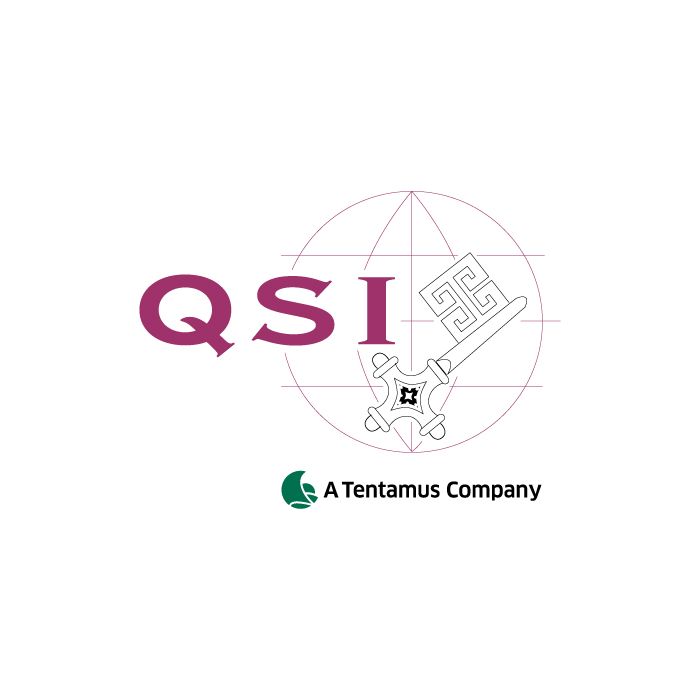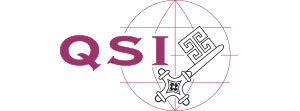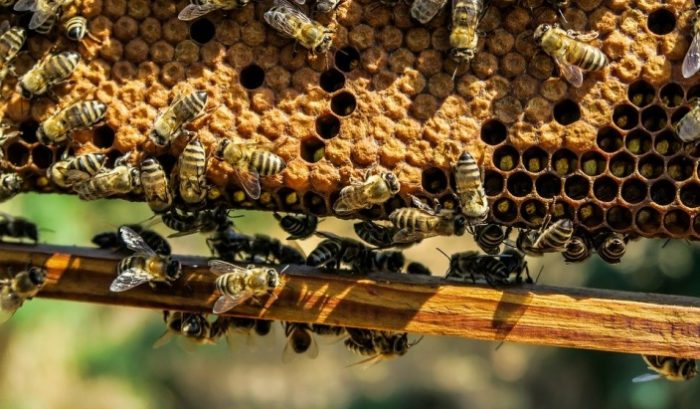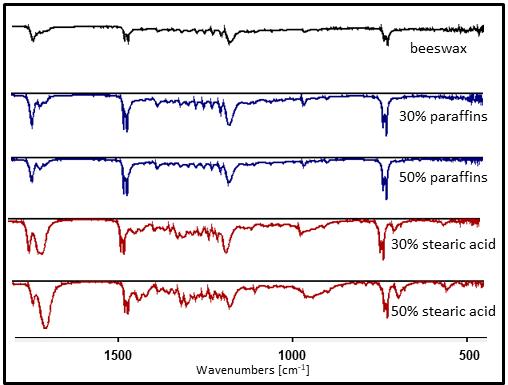Beeswax in general
Beeswax is a natural product that is produced by special wax-secreting glands of bee workers to build their comb. As a valuable raw material it is used in candle, pharmaceutical, cosmetic and food industries (E901) as well as essential raw material for the production of honeycombs. Despite of over 300 different single components, natural wax is mainly made of esters (70-80%), fatty acids (18-23%), hydrocarbons (14%) and alcohols (1%). [1,2] Mandatory thresholds of yellow beeswax Cera flava [3] and white beeswax Cera alba [4] for their appearance, odor, solubility, drop point, acid value, ester value and saponification number are listed in the European Pharmacopoeia (Ph. Eur.). However a specification for the total hydrocarbon content or thresholds for addition of paraffins or stearic acids does not exist in the European Pharmacopoeia. A maximum value of 18% for the total hydrocarbon content is only stated in the Quality Mark for candles (RAL-GZ041). According to the literature, natural beeswax contains about 14% hydrocarbons that make an addition of 4% paraffins possible. In general the production of beeswax in accordance to Ph. Eur. and E901 is allowed; even it contains paraffins and/or stearic acids. That might have dramatically consequences for the beekeeping. The intermixture of cheap stearic acid to beeswax can lead to higher larva mortality due to an increase in wax hardness. Addition of low melting paraffin can result in sagging or collapse of the honeycomb.
QSI beeswax database Version 1.0
Quality of the data is crucial, as including adulterated samples in a database which is supposed to contain only authentic beeswaxes, would render the entire approach simply useless. This is why QSI put an enormous effort in ensuring the authenticity of each and every sample that is included in the database from the very beginning.

Table 1: QSI database Version 1.0 of waxes.
Our database contains over 150 samples of waxes including authentic samples from different countries as well as series of spiking experiments to detect possible adulteration. For instance authentic beeswaxes were spiked with paraffins, stearic acids or carnauba.
Detection of beeswax adulteration by NMR
NMR (nuclear magnetic resonance) is a very powerful tool to detect possible addition of paraffins or stearic acids to authentic beeswax. Authentic beeswax has a specific NMR spectrum (profile) according to its composition of esters, fatty acids, hydrocarbons and alcohols. The following profile of an analysed wax sample is compared to the profiles of authentic beeswaxes and visualized in a quantile plot (please see Figure 1).
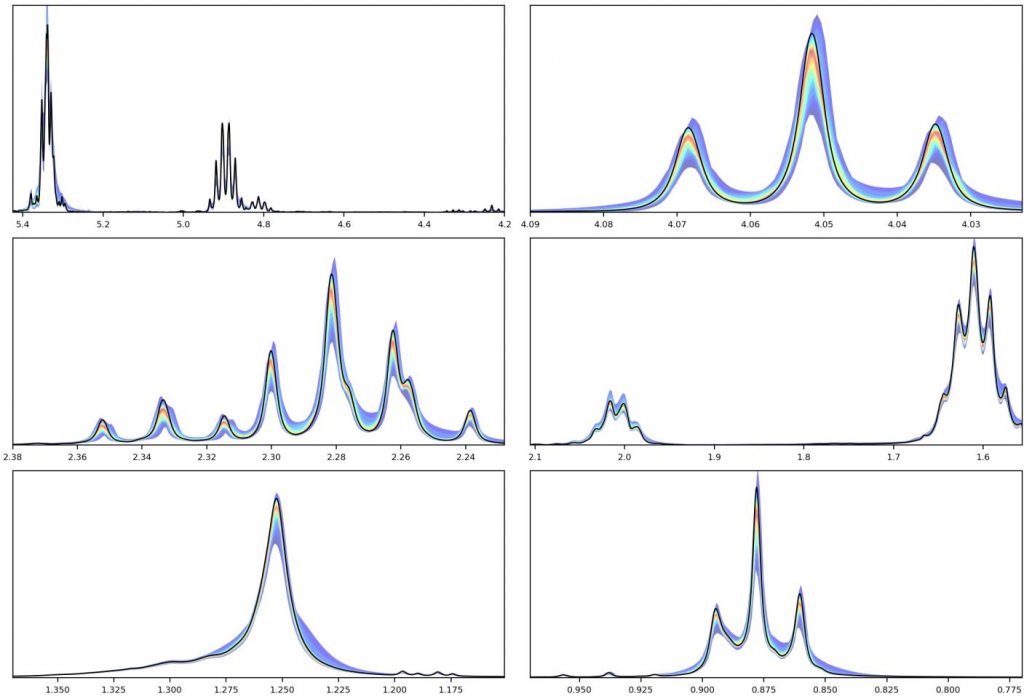
Figure 1: Quantile plot of an authentic beeswax sample from Germany. Chemical shifts δ are given in parts per million (ppm, numbers below pictures).
For the NMR-Profiling of beeswaxes, QSI is using a quantile plot. Figure 1 shows the quantile plot of an authentic beeswax from Germany. The black line represents the measured sample and the colored background the database. The NMR spectrum of an authentic beeswax is expected to be within the colored envelope. The red band represents the most frequently and blue band less commonly detected signal intensities of authentic samples.
Deviation of the NMR profile is clearly visible by the quantile plot and indicates adulteration by other waxes (please see Figure 2 and 3). In addition QSI is quantifying the absolute content of esters like myricyl palmitate (C15H31COOC30H61) by NMR. This value is compared to the average value of authentic samples for the detection of adulteration.
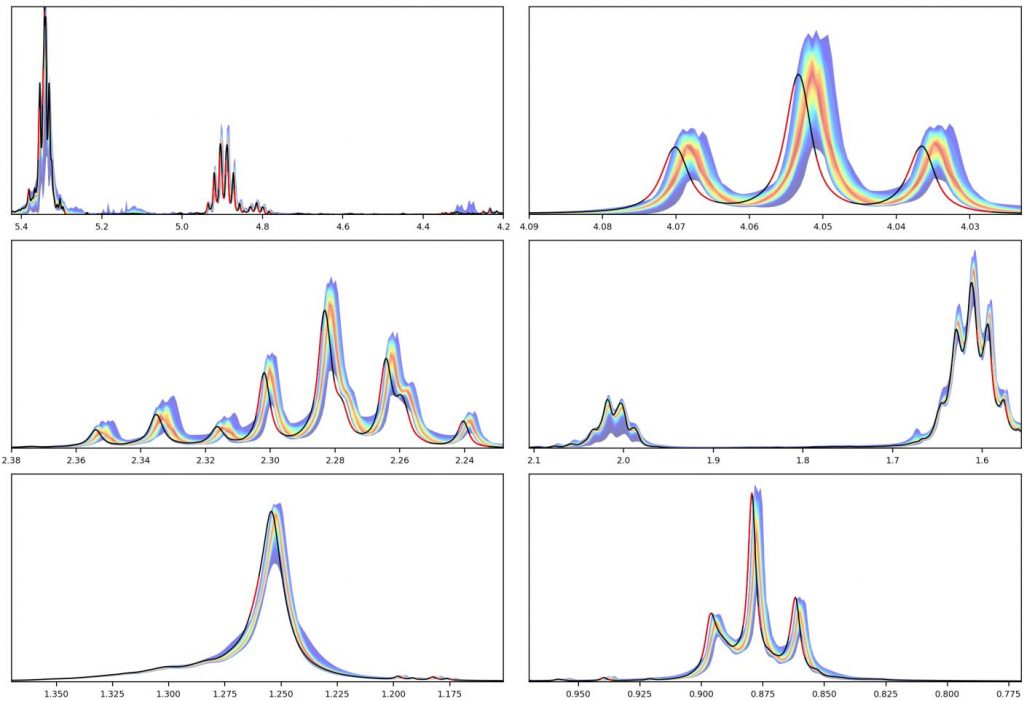
Figure 2: Beeswax sample adulterated by 6.25% paraffins. The red line clearly shows deviation in comparison to the database. Chemical shifts δ are given in parts per million.
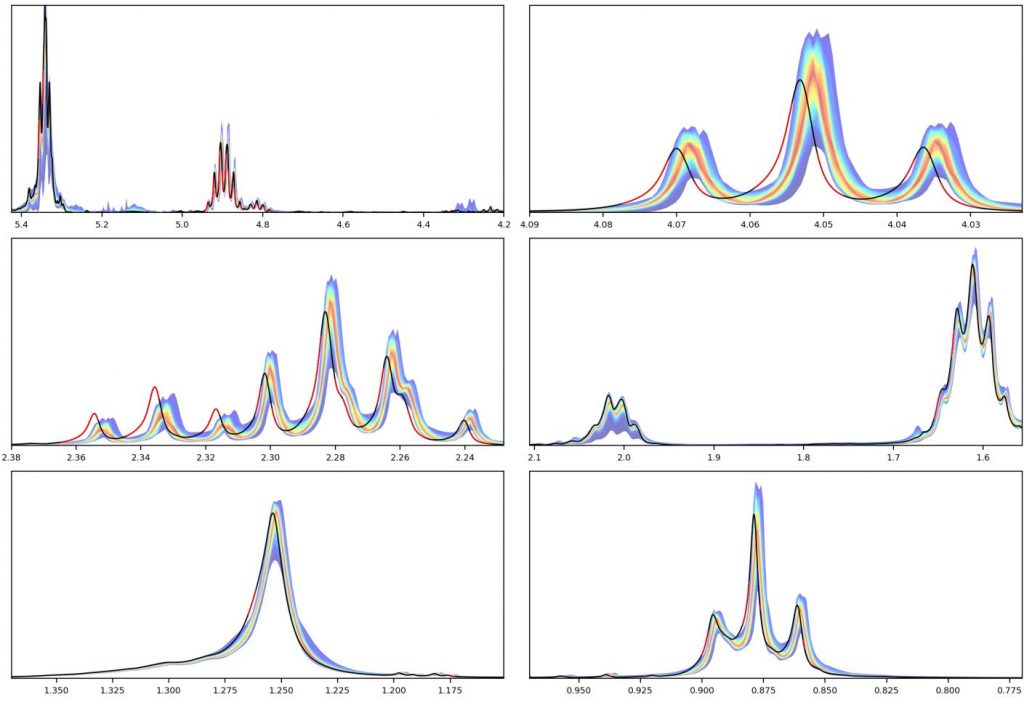
Figure 3: Beeswax sample adulterated by 3.96% stearic acid. The red line clearly shows deviation in comparison to the database. Chemical shifts δ are given in parts per million.
The NMR profile of beeswaxes also shows significantly deviations in dependence of their geographical origins. Beeswax from Germany vary distinguishable in the NMR profile from Africa, Hungary or Israel (please see Figure 4).
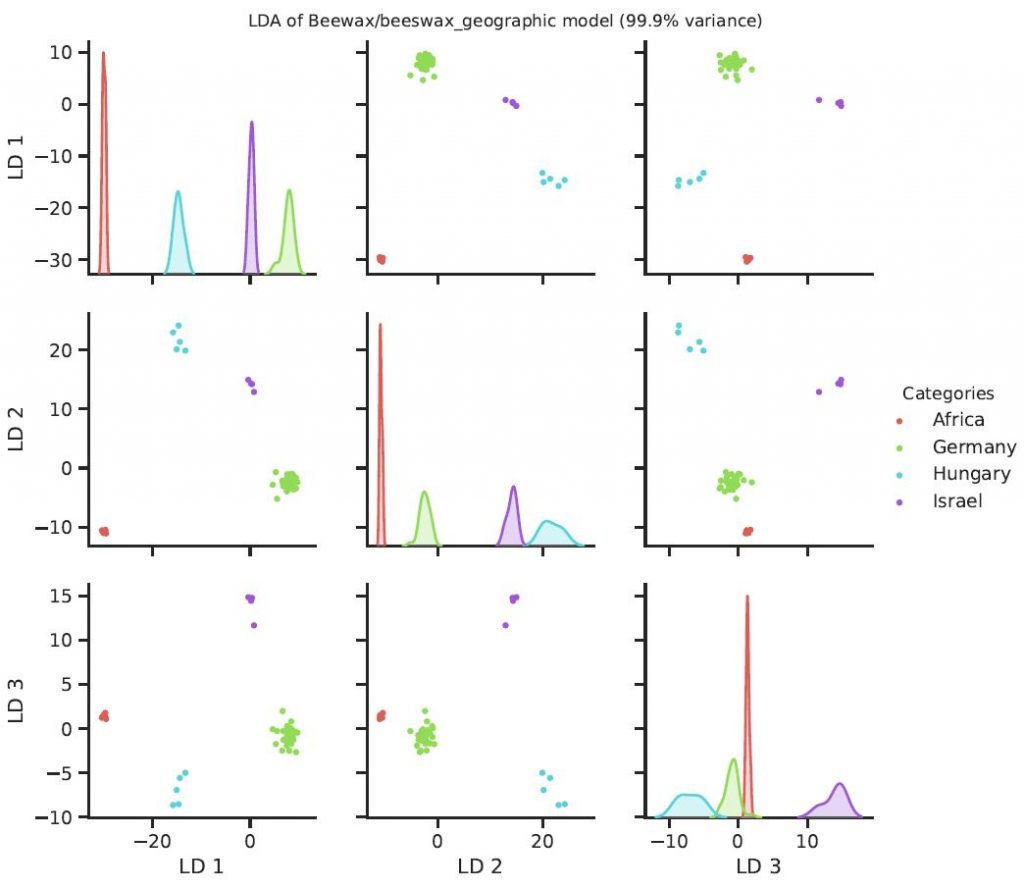
Figure 4: Statistical evaluation of geographical origin of beeswaxes by Linear discriminant analysis (LDA).
Detection of beeswax adulteration by ATR-FTIR
Figure 5: ATR-FTIR spectra of authentic and adulterated beeswax samples.
As an additional method; the addition of paraffins and stearic acids in beeswaxes can be also detected by Attenuated-Total-Reflection-Fourier-Transform-Infrared-Spectroscopy (ATR-FTIR). Paraffins can be detected by an increase of the CH2 scissor deformation by 1490cm−1 (ATR-FTIR). Stearic acid can be detected by the stretching vibration of the carbonyl group at 1700cm−1 (ATR-FTIR, please see Figure 5).
Our promise
We are aware of that beeswaxes are a natural product with changing composition depending on geographical origin, climate and harvest season. No database can contain all different varieties but QSI is continuously working on extending the beeswax database in order to further improve the statistical analysis, to provide more options to detect adulterations and additional classification models for geographical origins at the highest achievable confidence level.
QSI NMR Offer (Methods accredited according to ISO 17025)
• NEW: Test of beeswax by NMR and ATR-FTIR
o QSI code: 31415
o Included are comparison to QSI database and detection of possible adulteration with paraffins and stearic acids by NMR and ATR-FTIR.
• NEW: Test of beeswax by NMR and determination of total hydrocarbons
o QSI code: 36216
o Included are comparison to QSI database by NMR and determination of the total hydrocarbon content (DGF-Methode M-V6).
• NEW: Test of beeswax by NMR
o QSI code: 41220
o Included are comparison to QSI database and detection of possible adulteration with paraffins and stearic acids by NMR.
Additionally we offer to compare your sample with our database in terms of the geographical origin (Germany, Africa, Israel, Hungary). Please just feel free to contact us.
Literature
[1] Deutscher Imkerbund e.V., “Wachs-ein unterschätztes Bienenprodukt”, J. Fischer, W. von der Ohe, M. Weiler.
[2] Bayerische Landesanstalt für Weinbau und Gartenbau, “Bienenwachs“, Fachzentrum für Bienen.
[3,4] Ph. Eur. 9.0/0069; Ph. Eur. 9.0/0070
If you have any questions about the authenticity of beeswax do not hesitate to contact us.
Email: info@qsi-q3.de
Tel: +49 (0)421 / 59 66 070
Bremen, 04.06.2020 